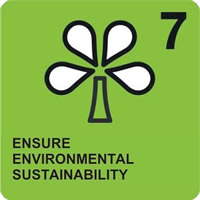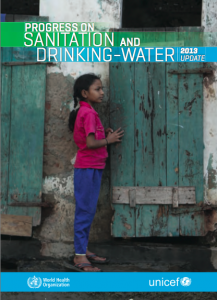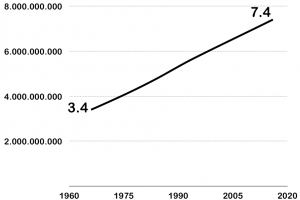Looking at the list of topics covered in this space over the last year, it is clear that the issues of water scarcity and sanitation is not well represented.
 Back in December, I wrote a post about clean tech for Africa which touched on the United Nations’ Millennium goals for 2015. The UN, in 2005, set eight long term goals on key issues to make the world a better place. Goal number 7 was to Ensure Environmental Sustainability and Target 7C was to: “Halve, by 2015, the proportion of the population without sustainable access to safe drinking water and basic sanitation”.
Back in December, I wrote a post about clean tech for Africa which touched on the United Nations’ Millennium goals for 2015. The UN, in 2005, set eight long term goals on key issues to make the world a better place. Goal number 7 was to Ensure Environmental Sustainability and Target 7C was to: “Halve, by 2015, the proportion of the population without sustainable access to safe drinking water and basic sanitation”.
According to the UN, the world has made great progress on the first part of the challenge concerning drinking water but will, most likely, not achieve the sanitation target as there were, in 2012, 2.5 billion people without access to what is called “improved sanitation”. This is not to say that everyone else has flush toilets in their houses and apartments as a well dug latrine with a plank of wood is considered “improved” and is already a huge step forward for many poor people.
Difficult Data
Of course just understanding what the situation is on these issues is a daunting task and a massive effort to collect data on a global basis was launched which is well documented by the World Health Organisation and Unicef in a series of reports.
 Last week, I shared the 2013 report, which has data from 2012, with my students in the second year of our full time MBA program.
Last week, I shared the 2013 report, which has data from 2012, with my students in the second year of our full time MBA program.
What struck me most by the students’ reaction is that they were very skeptical about the progress reported from developing countries and especially critical about data from their own countries such as India, Peru, Brazil and others.
The discussion revolved around the unreliability of data collection in the developing world and the political motivation of government officials which might lead them to overstate progress on sensitive issues.
Peepoople and innovative business models
The 50 billion dollar question is how to raise capital to fund the needed investment in infrastructure that both urban and rural populations need in this area.
The problem is that building sewers is expensive and it is unclear how poor people in informal settlements (favelas, slums, shanty towns, etc.) will ever be able to pay enough to make such projects worthwhile.

One approach developed by Anders Wilhelmson, Camilla Wirseen, and Peter Thuvande is the PeePoo, a hygienic, sustainable, and inexpensive toilet system currently deployed for disaster relief and in pilot projects in Kenya’s Kibera slum and in other places that can make a real difference in people’s lives.
There is a case study put together by the Sustainable Sanitation Alliance and IESE will publish the one we wrote in a few weeks.
Complex Issue
Water is actually tremendously complex and will thus be the subject of further posts in this series. The first issue, in my view, is the one discussed in the report cited above which is to make sure that all people have access to drinking water and some level of sanitation to keep them and their children healthy.

At issue is the world population has roughly doubled in the last fifty years and approximately 70% of all fresh water available is used for agriculture and another 20% for industry leaving only 10% for people.
Fresh water can, however, be created from sea water and the business of creating, conserving, distributing, and using water is an $500 billion business opportunity which will be discussed in subsequent posts as well as the very real, and dangerous geopolitical issues which go with the issue.


Hi Mike,
Interesting post. I’d like to point out that the issue of water access is no longer a third-world issue. SkyFuel (gratuitous plug) finished up a solar desalination system in the Central Valley of California last year, in partial response to the ongoing drought in the SouthWest United States. It has been like watching a car crash in slow motion as cities, counties, and states struggle with water allocation to the agricultural, fracking, and recreational sectors. California is only the tip of the iceburg.
Here’s an interesting exercise; overlay this map (http://www.drought.gov/drought/) with this map (http://www.eia.gov/oil_gas/rpd/topfields.pdf) and you’ll see some dramatic overlap in places like Oklahoma, Texas, Colorado, and New Mexico.
But back to your previous query on allocating capital to necessary infrastructure; USAID Desalination Price is attempting to address some of this issue through technology innovations and sustainable financing initiatives (ie, partnering with microfinance institutions, etc.) Given the destabilizing impact of resource scarcity in places Rwanda and Nigeria (and Iraq?), I imagine this is only going to become more and more important.
I think we in North America take for granted our easy access to good drinking water and sanitation. I know from experience in our commercial real estate investments that when something goes wrong with the plumbing and people don’t have water panic sets in. what does your neighborhood look like when there is no garbage collection for just a couple of weeks? two things we take for granted that impact our lives greatly.